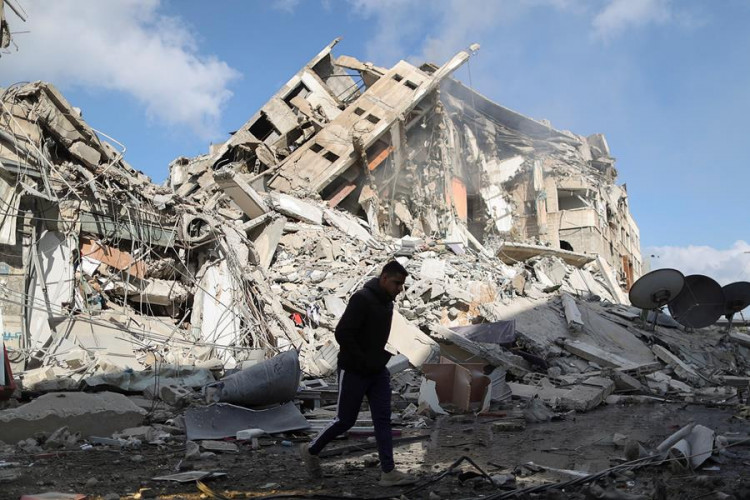The Israel-Palestine conflict continues to intensify, with various regional militias voicing their readiness to join Hamas in its operations.
On Tuesday, Abdul-Malik al-Houthi, the leader of Yemen's Houthi militia, cautioned the U.S. against direct intervention in the conflict during a televised speech. He warned that they would join Hamas and respond with drones, missiles, and other military actions, hinting at the possibility of the conflict escalating regionally.
Al-Houthi stated that the decision to launch the "Al-Aqsa flood" operation was entirely up to the Palestinians and expressed his readiness to deploy hundreds of thousands of fighters to stand with the Palestinian people against their adversaries.
The Houthi militia, believed to be backed by Iran, has been at war with the Saudi-supported Yemeni government since 2014. Despite their differences, both sides in Yemen have shown a rare united front against Israel's actions. Large numbers of civilians from territories controlled by both factions have taken to the streets, expressing their strong dissatisfaction with Israel's bombardment of the Gaza Strip.
Iraqi Militias Issue Warnings
Several Iraqi militias have also issued threats. On Monday, Hadi Al-Amiri, the leader of the Badr Organization in Iraq, warned the U.S. against interference, stating that they would target all U.S. interests if the U.S. intervened. The Badr Organization is a Shiite political group in Iraq that includes the Popular Mobilization Forces (PMF), a state-sanctioned paramilitary force with many Iran-backed factions.
Another PMF faction, Kataib Hezbollah, threatened to target U.S. bases and Israeli positions if the U.S. military intervened in the "Al-Aqsa flood" operation.
Currently, there are approximately 2,500 U.S. troops stationed in Iraq. Over the past few years, U.S. forces and the U.S. embassy in Baghdad have been frequently attacked, with many of these attacks believed to be carried out by Iran-backed Iraqi militias.
Lebanon's Hezbollah Enters the Conflict
Lebanon's Hezbollah militia has already taken action. They fired artillery at three locations in the disputed Shebaa Farms area bordering Israel. Israel retaliated. On Wednesday, Hezbollah launched another missile attack on Israeli targets, describing it as a "firm response" to previous Israeli attacks. Israel subsequently struck Hezbollah targets in Lebanon.
U.S. Military Buildup in the Middle East
Meanwhile, U.S. military forces are amassing in the Middle East. On Tuesday evening, the USS Ford, the world's largest aircraft carrier, arrived near Israel with its battle group. The USS Eisenhower is also expected to arrive in about two weeks. The Israeli Defense Forces announced that the first plane carrying U.S. weapons landed at Nevatim Air Base in southern Israel on Tuesday evening. The U.S. has also promised to quickly supply Israel with more ammunition.
The Pentagon stated that these actions are a clear demonstration of U.S. support for Israel's defense, not just in words but in action. On Wednesday, U.S. Secretary of State Antony Blinken began his visit to Israel and Jordan, expressing support for Israel.
As the conflict escalated since last Saturday, by Thursday morning, over 2,500 people have died and nearly ten thousand have been injured on both sides. Additionally, about 339,000 Gaza residents have been displaced due to Israeli airstrikes.
The UN Secretary-General's spokesperson confirmed that 12 employees of the UN Relief and Works Agency for Palestine Refugees in the Near East, all locals from Gaza, were killed in Israeli airstrikes.
Furthermore, China's Ministry of Foreign Affairs announced on Thursday that three Chinese citizens were unfortunately killed in the conflict, two are missing, and several others were injured.






